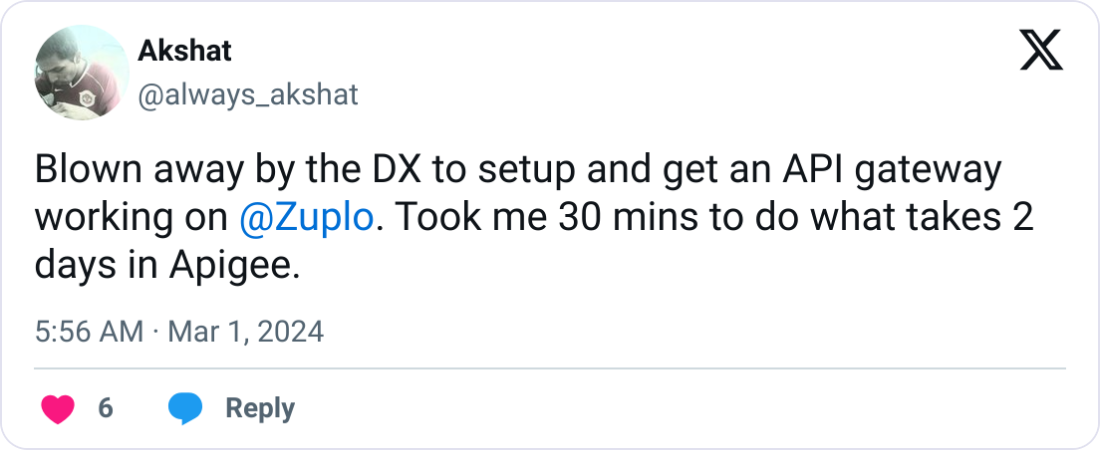High-volume API environments face security challenges that go far beyond typical systems. API security in high traffic environments isn't just about protection—it's the difference between operational success and catastrophic failure. When your system handles millions of requests per second, every millisecond of security overhead compounds dramatically, forcing tough decisions between performance and protection.
According to F5's 2024 State of Application Strategy Report, APIs have become the backbone of digital transformation efforts, making their security posture mission-critical. The fundamental challenge? Building security that scales alongside explosive traffic growth without creating performance bottlenecks. Let's explore how to tackle these unique challenges head-on.
- When Rate Limits Crumble: Traffic Management for High-Volume APIs
- Authentication Bottlenecks: Validating Millions of Tokens in Milliseconds
- Hidden Vulnerabilities: The Unique Threat Landscape for High-Volume APIs
- Scalable Security Architecture: Building Defenses That Grow With You
- Authentication That Performs: Scaling Verification Without Sacrificing Security
- Intelligent Traffic Management: Beyond Basic Rate Limiting
- Data Validation That Doesn't Become a Bottleneck
- Encryption That Scales: Security Without the Performance Penalty
- Gateway Architecture: Your First Line of Defense
- Monitoring That Scales: Seeing Threats in a Flood of Traffic
- Testing Security at Scale: Don't Wait for Production Failures
- Future-Proofing: Building Security for Tomorrow's Traffic
- Balancing Act: Security and Performance in Harmony
- Security That Scales With Your Success
When Rate Limits Crumble: Traffic Management for High-Volume APIs#
Standard rate limiting approaches collapse spectacularly under genuine traffic surges. According to a 2025 report, India experienced a staggering 3000% increase in API-targeted DDoS attacks within just three months, with one attack generating 1.2 billion malicious requests designed to blend with legitimate traffic.
High-traffic APIs need sophisticated rate limiting that distinguishes between legitimate traffic spikes and malicious floods. Managing request limits effectively requires adaptive rate limiting that intelligently adjusts thresholds based on traffic patterns and user behavior to maintain protection without blocking legitimate users.
Authentication Bottlenecks: Validating Millions of Tokens in Milliseconds#
In high-volume environments, authentication becomes a primary bottleneck when validating millions of tokens simultaneously. As Red Hat notes, "the challenge is balancing flexibility for legitimate users while blocking malicious actors on-the-fly, especially in environments where traffic volumes soar unpredictably."
Traditional authentication systems collapse under the weight of concurrent validation requests. Employing secure authentication practices can help optimize your approach with:
- Stateless JWT tokens with minimal payloads to reduce overhead
- Local token validation using cached public keys instead of authorization server callbacks
- Tiered authentication that applies stricter verification only for sensitive operations
- Short-lived access tokens (15-60 minutes) paired with longer refresh tokens to minimize validation frequency
Hidden Vulnerabilities: The Unique Threat Landscape for High-Volume APIs#
In high-traffic environments, traditional vulnerabilities transform into more dangerous threats due to the difficulty in distinguishing malicious activity from legitimate traffic spikes. These attacks specifically exploit high-volume conditions to avoid detection.
Volumetric Attacks That Hide in Plain Sight#
Attackers launch SYN floods, UDP floods, and DNS reflection attacks during peak traffic periods, making them nearly impossible to detect among legitimate requests. They blend in like chameleons, causing devastating service disruptions while evading traditional detection systems.
Resource Exhaustion: Death by a Thousand Cuts#
Resource exhaustion attacks target high-traffic APIs by triggering expensive operations that deplete system resources. The consequences are severe:
- Legitimate users face timeouts and failures
- Cloud costs skyrocket unexpectedly
- Critical operations suffer delays
A common real-world example: attackers target "forgot password" APIs with automated requests, simultaneously draining your budget through third-party SMS costs while blocking legitimate password resets.
Side-Channel Timing Attacks#
In high-traffic environments, even microsecond differences in processing time can reveal vulnerabilities. Attackers exploit these timing variances to extract sensitive information or bypass security controls. For instance, a slightly longer response time might indicate a valid username exists in your system, giving attackers critical reconnaissance data without triggering security alerts.
API Specification Manipulation#
As traffic volumes increase, discrepancies between documentation and implementation become dangerous attack vectors. Attackers exploit undocumented endpoints, hidden parameters, or inconsistent validation rules that exist in production but aren't specified in official documentation.
AI-Powered Attack Evolution#
Machine learning algorithms now generate traffic patterns that precisely mimic legitimate behavior, rendering traditional detection methods virtually useless. Instead of hammering a single endpoint, sophisticated attackers distribute requests across multiple related endpoints, staying below individual alerts while collectively overwhelming your system.
Scalable Security Architecture: Building Defenses That Grow With You#
Designing security that can scale with explosive traffic growth requires rethinking traditional approaches. The key? Breaking monolithic security into specialized components that can scale independently.
Security-as-Microservices: Divide and Conquer#
Implement a microservices approach to security by decoupling authentication, authorization, and threat detection into independent services. This allows targeted scaling of specific security functions during traffic surges without overprovisioning everything—like deploying reinforcements exactly where you need them.
Edge vs. Core: Optimal Security Placement#
Strategic placement of security controls dramatically impacts performance:
- Edge Security: Implement time-sensitive validations (token verification, rate limiting) near users to minimize latency and bandwidth consumption. Think of it as having security checkpoints in every neighborhood rather than forcing everyone downtown.
- Core Security: Reserve your central systems for complex policy enforcement, threat correlation, and comprehensive audit trails.
For high-traffic environments, a hybrid approach yields the best results—quick validations at the edge with deeper security governance at the core.

Over 10,000 developers trust Zuplo to secure, document, and monetize their APIs
Learn MoreLoad-Aware Security: Intelligence Under Pressure#
Your security systems need to adapt intelligently under traffic pressure. Implement:
- Dynamic rate limiting that adjusts thresholds based on current conditions
- Automatic scaling of verification processes during peak periods
- Varied inspection depth that applies comprehensive checks during normal periods but focuses on critical validations during extreme traffic
Authentication That Performs: Scaling Verification Without Sacrificing Security#

Authentication often becomes the first bottleneck in high-traffic APIs. Choosing the right API authentication methods is crucial as every millisecond spent on verification multiplies across millions of requests, potentially tanking performance.
JWT Optimization for Speed#
JWTs are ideal for high-volume environments when properly configured:
- Keep payloads minimal—every byte multiplies across millions of requests
- Implement local validation using cryptographic signatures instead of authorization server callbacks
- Cache public keys used for validation to avoid repeated JWKS endpoint calls
- Include essential permissions directly in the token to eliminate lookup operations
Scaling OAuth Without Breaking the Bank#
OAuth can crush performance if implemented naively in high-traffic systems:
- Deploy authorization servers across multiple regions to reduce latency
- Implement local validation for most requests, using introspection selectively
- Cache client credentials tokens for machine-to-machine authentication
- Design revocation mechanisms that work at scale through distributed token blacklists
Intelligent Traffic Management: Beyond Basic Rate Limiting#
Basic rate limiting is like controlling highway traffic with a single stop sign—inadequate for high-volume APIs. Advanced approaches, such as dynamic rate limiting, balance protection and performance as traffic scales.
Choosing the Right Algorithm#
Two algorithms stand out for their effectiveness in high-traffic environments:
- Token Bucket Algorithm: Allows short traffic bursts while maintaining consistent average throughput—like saving your allowance for bigger purchases.
- Leaky Bucket Algorithm: Ensures constant request processing regardless of input volume, creating smoother but less flexible traffic flow.
The token bucket approach generally performs better for APIs with variable traffic patterns, allowing legitimate bursts without punishing users who happen to click simultaneously. Implementing effective API rate limiting strategies is key to intelligent traffic management.
Distributed Implementation for Scale#
For multi-instance deployments, consistent rate limiting requires coordination:
- Use Redis as a centralized counter store for atomic updates across instances
- Implement sliding windows to prevent "end of window" rushes that plague naive implementations
- Add safety buffers to account for eventual consistency delays in distributed systems
Data Validation That Doesn't Become a Bottleneck#
Validation can quickly become a performance killer in high-traffic APIs if not properly optimized. Effective API request validation balances thoroughness with efficiency.
Progressive Validation: Fail Fast#
Apply validation in stages of increasing complexity:
- Reject obviously invalid requests (missing fields, wrong data types) immediately
- Verify structural correctness with optimized schema validators
- Apply complex business logic validation only to requests that pass preliminary checks
This approach quickly eliminates garbage requests without wasting resources on complex validation they would inevitably fail.
Pre-Compiled Validation for Speed#
For JSON Schema validation, compile schemas once during application startup rather than parsing them repeatedly:
- Create validators during initialization and reuse them for all requests
- Select performance-optimized libraries like Ajv for JavaScript applications
- Consider risk-based validation depth that aligns scrutiny with potential damage
Encryption That Scales: Security Without the Performance Penalty#
Encryption overhead becomes significant at scale. Optimize your approach without compromising security:
TLS Optimization Strategies#
TLS handshakes are computationally expensive during traffic spikes:
- Implement session resumption through tickets or IDs to avoid full handshakes for returning clients
- Adopt TLS 1.3 to reduce handshake latency from two round-trips to one
- Use OCSP stapling to include certificate validation in the handshake, eliminating external lookups
Strategic Encryption Decisions#
Not all data requires the same level of protection:
- Use faster symmetric encryption (AES) for payload data
- Reserve resource-intensive asymmetric encryption (RSA) for key exchange only
- Leverage hardware acceleration capabilities like AES-NI for 5-10x performance improvements
- Apply field-level encryption selectively based on data sensitivity
Gateway Architecture: Your First Line of Defense#
API gateways are either your strongest fortress or your biggest bottleneck. Understanding the advantages of API gateways is critical for maintaining both security and performance at scale. Knowing the must-have API gateway features can guide this process.
Multi-Tier Gateway Deployment#
Distribute security controls between edge nodes and centralized systems:
- Process basic checks (token validation, rate limiting) at the edge to reduce latency
- Handle complex operations (threat detection, advanced policies) in core systems
This approach prevents the single point of failure that plagues centralized architectures during traffic surges, as detailed in HPE's analysis of edge security.
Policy Decision Caching#
Dramatically improve throughput by implementing decision caching:
- Store frequent authorization results to avoid redundant checks
- Cache validation outcomes for commonly accessed resources
- Set appropriate TTL values based on sensitivity and change frequency
Organizations typically reduce authorization overhead by 70-80% with effective caching strategies, maintaining security while improving performance.
Monitoring That Scales: Seeing Threats in a Flood of Traffic#

Traditional security monitoring breaks down under high traffic. Implement scalable approaches to maintain visibility without drowning in data.
Selective Logging for Signal Detection#
When processing millions of requests per second, logging everything becomes impractical:
- Sample 5-10% of normal traffic to establish baselines
- Log 100% of suspicious or anomalous requests
- Always capture authentication events and permission changes
- Use buffered logging to handle traffic surges without dropping critical events
This selective approach reduces storage and processing requirements by 60-80% while improving security visibility by focusing on what matters.
Distributed Threat Detection#
Move from centralized to distributed monitoring:
- Deploy lightweight detection agents near API endpoints
- Implement adaptive baselines that learn normal traffic patterns
- Use distributed processing frameworks like Kafka or Kinesis for telemetry
- Apply AI-powered detection to identify subtle attack patterns
This architecture allows security monitoring to scale horizontally alongside your API infrastructure, maintaining visibility during traffic surges.
Testing Security at Scale: Don't Wait for Production Failures#
Security controls that perform flawlessly under normal conditions often fail spectacularly at scale. Conducting thorough end-to-end API testing before your users discover the breaking points is essential.
Combined Performance and Security Testing#
Merge security testing with load testing to verify effectiveness under pressure:
- Test authentication mechanisms under high concurrency
- Verify rate limiters maintain effectiveness at their limits
- Confirm validation remains consistent during traffic spikes
- Check if logging captures all security events under load
Chaos Engineering for API Security#
Apply chaos principles to security testing:
- Inject attack patterns during load tests to test detection capabilities
- Simulate security component failures to verify graceful degradation
- Throttle security services randomly to test system resilience
- Create token hijacking scenarios during peak loads
These experiments reveal security blind spots that traditional testing misses completely.
Future-Proofing: Building Security for Tomorrow's Traffic#
Your API traffic will grow. Is your security architecture ready to scale 10x without becoming a bottleneck? Implement forward-looking strategies:
Emerging Standards and Approaches#
Zero trust architecture has emerged as the foundation for scalable API security:
- Verify every request rather than relying on session-based trust
- Implement API microsegmentation to limit lateral movement
- Provide just-in-time access rather than standing privileges
AI-powered adaptive controls are becoming essential for high-traffic environments:
- Dynamic rate limiting that adjusts based on real-time patterns
- Behavioral anomaly detection that learns your specific API ecosystem
- Autonomous threat response that acts faster than human intervention
Planning for Exponential Growth#
Build security that scales with your success:
- Model future requirements by projecting current growth trajectories
- Implement distributed validation mechanisms closer to users
- Design horizontal scaling into all security components
- Build comprehensive observability into security controls
Balancing Act: Security and Performance in Harmony#
Security and performance aren't opposing forces—they're complementary when implemented strategically. The goal isn't compromise but optimization.
Tiered Security Implementation#
Not all requests require the same scrutiny:
- Apply quick checks at the edge to reject obviously malicious traffic
- Reserve intensive authentication for sensitive operations
- Optimize token validation to minimize overhead on every request
As F5's State of Application Strategy Report notes, this balanced approach is essential as APIs become the backbone of digital transformation.
Edge Computing for Security Optimization#
Moving security to the edge transforms performance during traffic surges:
- Process checks near users to reduce round-trip time
- Reject malicious requests before they consume bandwidth
- Maintain security even during central system outages
Local threat detection at edge nodes is like having security checkpoints everywhere instead of forcing all traffic through a central bottleneck.
Security That Scales With Your Success#
Security and performance in high-traffic API environments require specialized approaches beyond traditional practices. By implementing these strategies—from distributed architecture to edge security to adaptive controls—you can build API security that helps your systems stay responsive and reliable under attacks that would make your competitors crumble.
Your customers will notice the difference, even if they don't understand the technical details behind it. And that trust translates directly to your bottom line.
Ready to implement high-performance security for your high-traffic APIs? Zuplo's API Gateway delivers the perfect balance of security and performance, with distributed validation, edge security, and adaptive rate limiting built right in. Get started with a free account today and see how Zuplo can transform your API security without compromising performance!